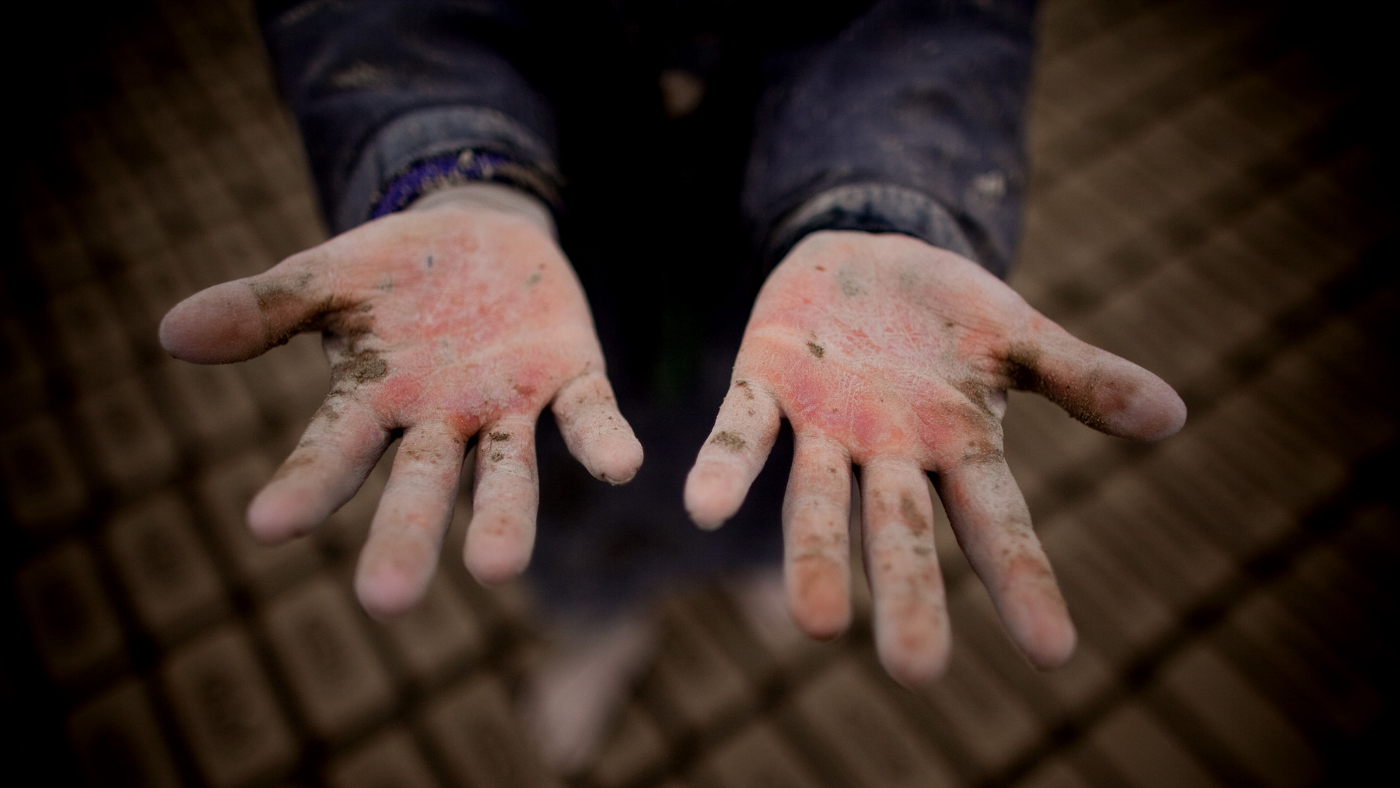How Covid-19 set back the battle against child labour
After two decades of progress, 2021 saw increase in number of children working globally

The UN International Labour Organization (ILO) declared 2021 to be the year for the elimination of child labour. But a report published in June last year found that the number of children in work around the world may have risen for the first time in 20 years.
According to the ILO, the number of working children dropped by approximately 38% between 2000 and 2016. But progress in 2021 was “patchy”, Reuters said.
Even in areas where improvements have been made, the pandemic was seen to be “endangering that progress”, Unicef and the ILO’s Global Annual Results Report found. So why did the pandemic force so many young people into labour?
The Week
Escape your echo chamber. Get the facts behind the news, plus analysis from multiple perspectives.

Sign up for The Week's Free Newsletters
From our morning news briefing to a weekly Good News Newsletter, get the best of The Week delivered directly to your inbox.
From our morning news briefing to a weekly Good News Newsletter, get the best of The Week delivered directly to your inbox.
‘Eye off the ball’
The root causes of child labour include poverty, a “lack of worker rights, lax enforcement, and the lack of family-sustaining wages for parents”, said US Senator Bob Casey writing in the Financial Times. The fragility of global supply chains also hinders the effective enforcement of child labour regulations.
The Covid-19 pandemic exacerbated these existing risk factors, as “lockdowns in some of the world’s poorest countries” saw “schools close, households lose their incomes and, in some cases, a growth in domestic violence”, said The Guardian. Policymakers also “took their eye off the ball to one degree or another” as attention turned to the Covid threat, ILO child labour specialist Benjamin Smith told Reuters.
The total number of children working globally now stands at an estimated 160 million, Unicef and the ILO said. This figure increased by 8.4 million children in the four years before the report’s publication.
Covid precautions
The intertwined socio-economic difficulties that Covid-19 exacerbated forced some children to turn to “precarious and exploitative work” to provide for their families, The Guardian said. This meant that they endured “long hours, low pay and scant regard for safety”.
A free daily email with the biggest news stories of the day – and the best features from TheWeek.com
With schools shut, work was perceived by many “as a logical alternative” to education, a report co-published by Human Rights Watch (HRW) and partner international organisations last year on child labour in Ghana, Nepal and Uganda also highlighted. The lower wages that children are paid compared to adults also made them more attractive to businesses.
Many governments also “reduced or even eliminated labour inspections due to Covid-19 precautions”, the HRW report said, adding that “without effective enforcement, child labour is likely to to go undetected”.
The types of work child labourers carry out varies, and the pandemic also increased the household responsibilities children may now carry out. “For example girls taking on caregiving roles for young siblings to enable parents to work remotely,” said the HRW report.
“What began as a global public health emergency evolved rapidly into a child rights crisis that is unprecedented in both the universality of its scope and the inequality of its impact,” the UN agencies stated.
A significant rise in the number of child labourers between the ages of 5 and 11 was recorded by the non-profit agencies, with 79 million children aged 5 to 17 now thought to be working in hazardous conditions.
Global issue
In Venezuela, an economic crisis fuelled “a mass migration of more than five million” people, which has “turned many children into breadwinners for their families”, said Al Jazeera.
Carlos Trapani, the coordinator of the Venezualan charity Cecodap, which focuses on children’s rights, told the broadcaster that children have turned to “toiling in garbage dumps” and working in “agricultural fields” to provide for their households.
In the Asia and Pacific region, many countries have “a high tolerance for child labour”, which has hindered progress to combat the issue, the ILO warned.
“Political volatility and conflict” have also exacerbated the problem, the UN agency said, with rural communities also likely to see a higher prevalence of child labourers as natural disasters raise the risk of children’s vulnerability.
The ILO estimates that Africa has the highest number of child labourers, at 72.1 million. The majority of these children are engaged in the agricultural sector, but the HRW also interviewed children working in gold, marble and limestone mines, as well as stone quarries and construction.
In Ghana and Uganda, “children worked at gold mining sites carrying heavy bags of ore, crushing the ore into smaller pieces with hammers, breathing in dust and fumes from processing machines and handling toxic mercury to extract gold from the ore”. Some of the children described the injuries and physical suffering they experienced as a result of this arduous work.
In Colombia, children have been recruited into armed gangs during the pandemic, an issue that “has become a matter of national concern”, said Foreign Policy.
Covid lockdowns and school closures provided a “perfect storm” that accelerated “conflict and new armed outfits”, leading to a “surge in the number of youth and minors joining criminal ranks”.
In some instances, children were lured into these groups with promises of payment and household provisions. In others, some faced threats against their family if they refused to undertake the gang’s illicit activities.
Evolving threat
The ways in which children are recruited and engaged in work has also changed in recent years. The UN agencies found that digital technology had “also put children at heightened risk of online harms”.
One tech company that has been accused of using child labour for profit is Roblox – “the most valuable game company in the world”, according to The Observer.
The global gaming platform allows users to create and program their own games, and to play those created by other users.
The company was “buoyed by the Covid-19 pandemic”, with more than 27 million games and experiences published on the platform by the end of 2021. But its “empire” was built, at least in part, by the “creativity and labour of children”, said the newspaper.
“Proponents argue that by teaching children how to make, market and sell their creative work, Roblox equips young people with a set of valuable skills for the digital workplace”. But “stories of exploitation on the platform are rife”.
One 16-year-old told the newspaper that they “became incredibly burned out” and were “constantly trying to find ways to improve” their game. “We have no such thing as hours because we’re not professionals,” he said.
HRW’s children’s rights advocacy director Jo Becker identified three things that contributed to the progress made between 2000 and 2016: “Expanding children’s access to education, providing cash transfer or child allowances (monthly stipends) to families, and strong child labour laws that are effectively enforced.”
Urgent action is now needed to stop another 8.9 million children becoming child labourers by the end of this year, the UN has said, and its Sustainable Development Goals (SDG) call for an end to child labour in all forms by 2025.
While “legislation alone cannot eradicate child labour”, the ILO noted in a recent policy review and roadmap that “it is equally impossible to eliminate child labour without effective legislation”.
Social dialogue at a national and local level is needed to build on the policies already in place, the ILO said.
Social protection systems, access to education and addressing the exploitation of children in global supply chains are also urgently needed if the SDG is to be met.
Julia O'Driscoll is the engagement editor. She covers UK and world news, as well as writing lifestyle and travel features. She regularly appears on “The Week Unwrapped” podcast, and hosted The Week's short-form documentary podcast, “The Overview”. Julia was previously the content and social media editor at sustainability consultancy Eco-Age, where she interviewed prominent voices in sustainable fashion and climate movements. She has a master's in liberal arts from Bristol University, and spent a year studying at Charles University in Prague.
-
 What will happen in 2026? Predictions and events
What will happen in 2026? Predictions and eventsIn Depth The new year could bring peace in Ukraine or war in Venezuela, as Donald Trump prepares to host a highly politicised World Cup and Nasa returns to the Moon
-
 Why is Trump’s alleged strike on Venezuela shrouded in so much secrecy?
Why is Trump’s alleged strike on Venezuela shrouded in so much secrecy?TODAY'S BIG QUESTION Trump’s comments have raised more questions than answers about what his administration is doing in the Southern Hemisphere
-
 Vance’s ‘next move will reveal whether the conservative movement can move past Trump’
Vance’s ‘next move will reveal whether the conservative movement can move past Trump’Instant Opinion Opinion, comment and editorials of the day
-
 How Bulgaria’s government fell amid mass protests
How Bulgaria’s government fell amid mass protestsThe Explainer The country’s prime minister resigned as part of the fallout
-
 Femicide: Italy’s newest crime
Femicide: Italy’s newest crimeThe Explainer Landmark law to criminalise murder of a woman as an ‘act of hatred’ or ‘subjugation’ but critics say Italy is still deeply patriarchal
-
 Brazil’s Bolsonaro behind bars after appeals run out
Brazil’s Bolsonaro behind bars after appeals run outSpeed Read He will serve 27 years in prison
-
 Americans traveling abroad face renewed criticism in the Trump era
Americans traveling abroad face renewed criticism in the Trump eraThe Explainer Some of Trump’s behavior has Americans being questioned
-
 Nigeria confused by Trump invasion threat
Nigeria confused by Trump invasion threatSpeed Read Trump has claimed the country is persecuting Christians
-
 Sanae Takaichi: Japan’s Iron Lady set to be the country’s first woman prime minister
Sanae Takaichi: Japan’s Iron Lady set to be the country’s first woman prime ministerIn the Spotlight Takaichi is a member of Japan’s conservative, nationalist Liberal Democratic Party
-
 Russia is ‘helping China’ prepare for an invasion of Taiwan
Russia is ‘helping China’ prepare for an invasion of TaiwanIn the Spotlight Russia is reportedly allowing China access to military training
-
 Interpol arrests hundreds in Africa-wide sextortion crackdown
Interpol arrests hundreds in Africa-wide sextortion crackdownIN THE SPOTLIGHT A series of stings disrupts major cybercrime operations as law enforcement estimates millions in losses from schemes designed to prey on lonely users